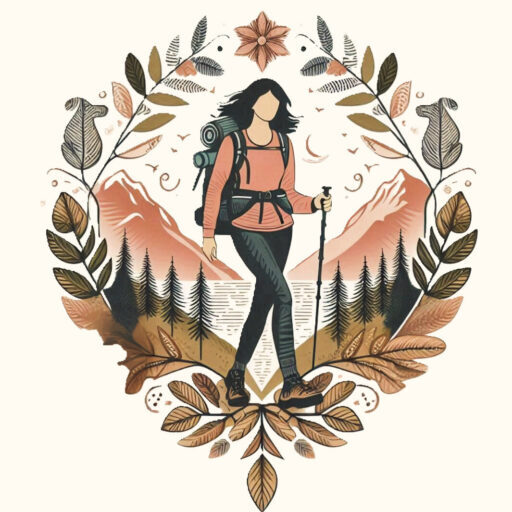How To Pack A Day Hike Backpack
When you’re gearing up for a day hike, knowing what to bring along is crucial. The very first rule of backpacking is drinking enough water. Hydration keeps energy levels up and helps you avoid fatigue, which can sneak up on you faster than a mountain breeze. Most folks opt for 2-3 liters; whether you choose a hydration bladder or trusty water bottles, just make sure you’ve got plenty.
Next, let’s talk snacks. You wouldn’t hit the road without gas, and the same goes for hitting the trails without fuel. Think energy bars, trail mix, and fruit. Whether it’s a handful of almonds or that trusty chocolate bar, keep your energy levels high on the go.
No pack is complete without a first aid kit. Accidents happen — a slip on a slippery rock or a minor cut from a branch. Band-aids, antiseptic wipes, and some pain relievers can make all the difference between turning back early and making it to the peak.
And remember, these essentials aren’t just a checklist. They’re your ticket to a safe and enjoyable hike. Keep ’em close and you’ll be ready to take on the trail, no sweat.
Navigating Your Path: Tools for Safe and Successful Hiking
Hitting the trails is all about knowing where you’re heading. Even with today’s tech, a good old-fashioned map should be in your toolkit. Paper maps don’t run low on battery, and having one ensures you’ve got a backup when technology decides to flake out.
Now, a compass might sound old school, but it’s surprisingly handy in keeping you on the right course. If your GPS or smartphone ditches you, a compass paired with your map can get you back on track. Remember, gadgets are great—but understanding the basics is better.
Speaking of gadgets, while a smartphone can work wonders, a dedicated GPS device can be a lifesaver, especially when you’re off the beaten path. Apps and downloadable map packs are helpful—just make sure they’re saved for offline use. Always keep them fully charged before you head out.
Picking the right navigation tools depends on the trail you’re tackling. Easy trails might only need a map and a charged phone, but if you’re venturing further into the wilderness or tackling tougher terrain, bring along more. With the right navigation tools, you’ll focus more on the scenery than worrying about where you are.
Dressing for the Journey: Clothing Tips for Comfort and Safety
When it comes to hiking gear, dressing right is just as important as packing the essentials. It starts with layering. Think of it like building a sandwich—the more thoughtful the layers, the better the outcome. Start with a moisture-wicking base layer to keep sweat at bay. Add an insulating layer to trap heat, and top it off with a waterproof shell to fend off unexpected downpours.
Let’s not forget about your headgear. Whether you’re trekking under a blazing summer sun or battling chillier temperatures, throwing on a hat offers valuable protection. A wide-brimmed hat for sunny days or a warm beanie for cooler climates keeps the elements at bay.
Sunglasses aren’t just for looking cool; they protect your eyes from harmful UV rays, reducing glare and keeping your sight in tip-top shape. They’re especially helpful when the sun bounces off snow or water, doubling the brightness and making things hard to see.
And if it’s chilly, gloves are a must. You don’t want your fingers going numb halfway through your hike. They might seem small, but they can make or break your outdoor experience.
Dressing for a hike can make all the difference between being comfortable or counting down the minutes until you can head back home. Suit up smart, and every step will feel like the right one.
Essential Gear: Packing the Right Tools for Every Adventure
Choosing the right backpack is all about balance. Opt for one that’s comfortable and fits well without feeling like you’re carrying a boulder. Look for adjustable straps and ample support to ensure it sits right on your back. Consider the size based on what you plan to pack—venture minimal or all out.
While trekking poles might seem like an extra piece of gear, they can be game-changers on uneven terrain. They take the pressure off your knees and provide stability while navigating rocks or steep inclines. Plus, they help maintain rhythm over long hikes, making your journey more enjoyable.
Then there’s the simple luxury of a headlamp or flashlight. You’re starting early, but what if the trail is just too breathtaking to leave? Darkness falls before you know it, and having a light source is essential for safety. Whether in a backpack or pocket, a compact, powerful light makes sure you don’t stumble on the trail—or end up spending the night outside.
Having the right gear isn’t about overpacking. It’s about anticipating what the trail throws your way. Bring the right tools and you’re not just hiking—you’re hiking smart.
Safety and Extras: Preparing for Unexpected Surprises on the Trail
Safety gear is often underestimated, but it’s your best ally on a hike. A whistle is one of the simplest but most effective tools you can carry. It’s small, doesn’t weigh much, and can catch the attention of others over long distances if an emergency unfolds.
A multi-tool or knife is like having a toolbox in your pocket. Whether you need to fix a strap, open a stubborn package, or cut a branch for kindling, this versatile piece of gear proves its worth over and over.
Now, let’s talk fire starters. Packing matches or a lighter in a waterproof container might feel like overkill—until you’re trapped in an unexpected rainstorm and need to ignite a quick fire to warm up or signal for help. It’s a small precaution with potentially big payoffs.
Sunscreen is your skin’s best friend out on the trail. A little sun might feel glorious, but the burn won’t as you head back home. Alongside insect repellent, these small items stave off discomfort in many forms.
Toting a trash bag is about more than keeping your pack tidy. It’s part of the ethos of leaving no trace. Carry your trash out and do your part to keep the trails beautiful for the next hike.
Lastly, don’t forget personal items like your ID and some cash. You never know when you might need them. And always keep your phone charged. It’s your lifeline to the outside world when things don’t go as planned.


Leave a Reply